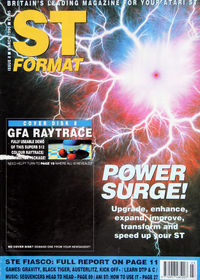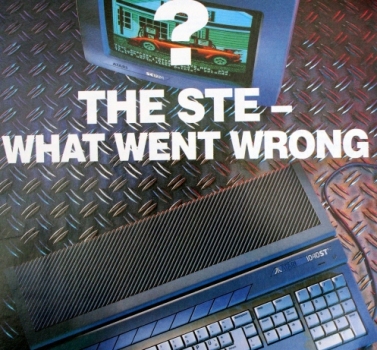
The STE was going to be an Amiga-beating computer: a machine capable of quite stunning graphics and sound, fast computation, yet priced at a level everyone could afford. Instead of the usual rannygazoo surrounding computer launches, the STE Sneaked out of Atari's back door and was discovered by - instead of being forced upon - unsuspecting journalists.
News of the STE'S imminent release was reported in the the press and, with the exception of one or two disgruntled programmers airing “it won't be supported” views, the machine became popular enough for enthusiasts to wait with baited breath. Rumours about price and availability were rife and everyone wondered whether they could afford to junk their existing ST and upgrade to Atari's latest baby.
Then quite without warning, reports of STEs on shelves started rolling in. The 1040 appeared first, with the 520 following swiftly hot on its heels. What started as a drip became a flood, and by Christmas 1989 even the high street box-shifters had shelves positively budging with STE silicon.
Quiet releases are often used by computer manufacturers attempting to ward off criticism provoked by excessive ''crash-bang” advertising campaigns - the maxim is that if you don't set yourself up, then you can't be knocked down.
Unfortunately, during the hands-on review stage, it appears that no one bothered to test the machine for compatibility with existing software. When Atari released the 1.09 TOS version a couple of years ago, many PD and “quick 'n' dirty” programs failed to run. PD libraries made note of this in their catalogues so that TOS 1.09 owners could avoid these programs. The STE had a significant TOS upgrade in version 1.6 - was it still compatible? It didn't take long to realise that it wasn't. Gamers, public domain libraries and software houses quickly noticed games, utilities and business software that the STE simply wouldn't run. Top games such as Populous, Kick 0ff, Strider and Rick Dangerous, evergreens such as Speedball and even serious software such as 1st Word collapsed without regaining consciousness. Suddenly, everyone was panicking about the STE.
Atari had urged software developers to stick to documented operating system routines and not to attempt to patch in their own code - but programmers avoid the operating system all the time in order to achieve greater speed and smoother graphics. Games are also the largest target for pirates, so programmers devise sophisticated software routines relying on undocumented features of the hardware to protect their wares. These created serious problems on the new computer.
| Arctic Fox – Electronic Arts Barbarian – Palace Barbarian 2 – Palace Captain Blood – Psygnosis Colossus Chess X – CDS Defender of the Crown – Mirrorsoft F16 Combat Pilot – Digital Integration Football Director II – D&H Future Wars – Palace Ghouls ‘n’ Ghosts – US Gold Gunship – Microprose Kick Off – Anco Licence to Kill – Domark Microprose Football – Microprose Mr Meli – Microprose |
New Zealand Storey – Ocean Netherworld – Argos Operation Wolf – Ocean Paperboy – Elite Populous – Electronic Arts Rik Dangerous – Microprose Speedball – Mirrorsoft StarGlider – Rainbird StarWars – Domark STOS – Mandarin Strider – US Gold Stunt Car Racer – Microprose Waterloo – Mirrorsoft Weird Dreams – Microprose Winter Games - Epyx |
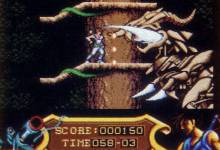
WON'T RUN: Strider
|
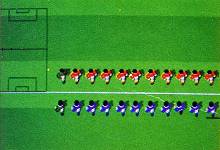
WON'T RUN: Kick Off
|
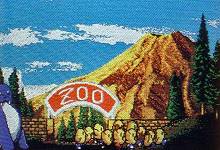
WON'T RUN: New Zealand Story
|
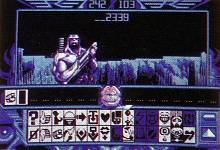
WON'T RUN: Captain Blood
|
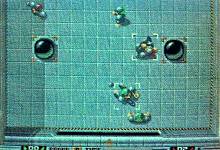
WON'T RUN: Speedball
|
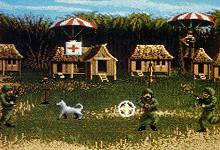
WON'T RUN: Operation Wolf
|
FOULED UP
Ocean's New Zealand Story and Mandarin's STOS games creator emerged as the first products not to run. The former had protection code that fouled up on the STE, the latter's problems remained a mystery but were quickly put right by STOS programmer Francois Leionet.
When questioned, Atari's Software Development Manager Bob Katz said, ''The main worry is that programmers aren't writing to the ROM which is now larger, and it’s in a different place in the memory map. If the programmers have written to our specifications then there won't be any problems.
Although Katz suggested that “[Incompatibility]... will only affect a small number of programs, writers of PD have access to technical information through third party sources,” libraries assert that up to 80% of their PD could be incompatible. “some of the well known demos such as the Union Demo won't even boot” complained Mike Goodman of foremost PD library Goodman PDL. “I’ve found that desk-top accessories requiring a medium resolution boot-up give an accessory not loaded message, and the STE boots into low res.”
BLACKLIST
Within 24 hours of the story breaking in our sister magazine New Computer Express, Atari were forced to admit that an estimated one in 20 games wouldn't run on the STE and had asked a major distributor to compile a list of incompatible software. They also released a software patch into the public domain to combat the medium resolution booting bug.
Leading software houses found their foremost titles refusing to load and run on the new machine. Electronic Arts, Digital Integration, US Gold, Microprose and Mirrorsoft all had to re-write existing games. Some titles deemed to be at the end of their Shelf life were not updated. Mirrorsoffs Speedball and Electronic Art's Arctic Fox both tell by the wayside. But top sellers Ghouls 'n' Ghosts, Strider and New Zealand Story were examined and re-programmed within days of recognising the problem.
The main complaint from software houses was the lack of time they'd had to use the machine before it went on sale. Microprose spokesman Martin Moth voiced a common feeling: The stupid thing about the STE is the amount of time we've been given by Atari. We couldn't forsee this coming because we didn't get our STE delivered early enough.
Atari are doggedly denying STE compatibility problems. The company line is that if programmers had stuck to programming guidelines none of the problems would have arisen. Bob Katz is obstinately playing down the fiasco: (“We estimate that about five per cent of ST games won't run on the STE. That's about usual with any kind of upgrade. This comes from programmers jumping in and expecting to find everything in the same place in the memory map as before.”
As ST Format went to press, rumours about a possible recall of the STE were being emphatically denied by Atari. We'll continue to provide readers with updates detailing the an- going STE incompatibility story, but advise existing STE owners to hang on to their machines. The STE is a superior-specified, quality computer that will soon receive the attention it so richly deserves from software houses.
Jerry Glenwright

